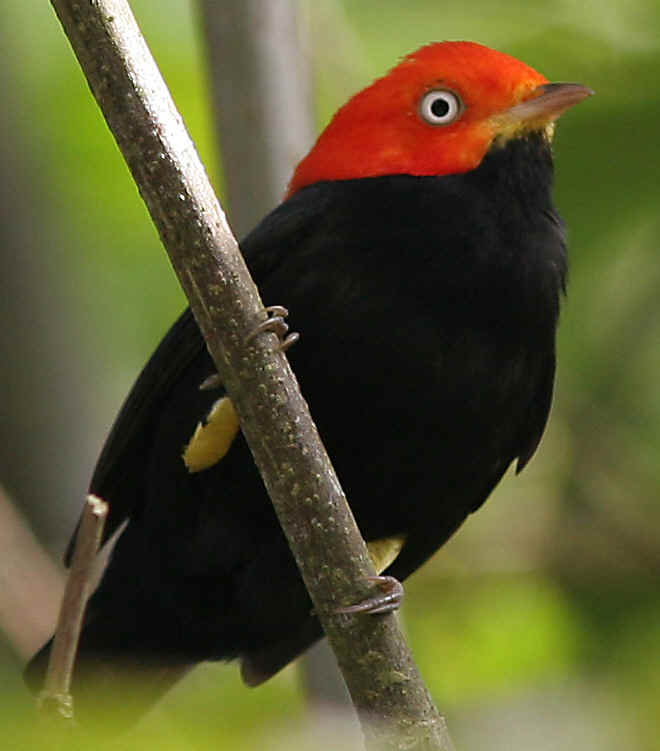Chiapas, Mexico: Tropical deciduous forest,
colonial San Cristobal and the central highlands, lowland
rainforest, and Mayan ruins
Future dates
TBA
Harboring
about ten percent of Earth’s biodiversity, Mexico is one of the most
biologically rich countries in the world. During
this natural adventure, we’ll explore and learn about some of that richness as
we travel through tropical deciduous forest, the pines and oaks of the
mountains above San Cristobal de Las Casas, and the vast rainforests of the eastern lowlands
to see, enjoy, and learn about the birds, natural history, and culture of Chiapas, Mexico.
Chiapas, Mexico.
We
begin our journey in Tuxtla Gutierrez, one of the few areas where the tropical
deciduous forest that dominates Mexico’s west coast penetrates the interior.
In Sumidero National Park, we’ll look for dry forest specialists such
as white-throated magpie jay, Nutting’s flycatcher, white-lored gnatcatcher,
streak-backed oriole, banded wren, russet-crowned
motmot, and the rare belted flycatcher. From
Tuxtla we head east to San Cristobal de las Casas, a beautiful colonial town
surrounded by mountains forested with oaks and pines.
Here we’ll look for local specialties such as pink-headed warbler,
rufous-collared robin, rufous-browed wren, blue-and-white mockingbird, and black-capped swallow as well as
more widespread species such as hooded grosbeak, mountain trogon,
cinnamon-bellied flowerpiercer, crescent-chested warbler, garnet-throated
hummingbird, and many others.
We’ll also have time to visit the Na Bolom Museum, the textile museum, sample local
cuisine, and enjoy the rich local culture.
From
San Cristobal, we’ll cross the mountains and drop down to Palenque and the
rainforests of the eastern lowlands. Here, we’ll take a tour of the
impressive ruins, enjoy the excellent
mus eum
with its many original artifacts,
and visit the Aluxes wildlife conservation center which, in addition to its
excellent educational exhibits, has very good birding. The birds of
Mexico's lowland rainforests are excellent and we'll have opportunities to see a
variety of both widespread and localized species, including black-headed,
gartered, and slaty-tailed trogons, slate-headed tody-flycatcher, rufous-breasted
spinetail, spot-breasted wren, long-billed gnatwren, yellow-bellied elaenia,
grayish, black-headed, and buff-throated saltator, and many wintering
migrants.. We'll also look for black howler monkey's, Mexican red-bellied
squirrel, white-lined sac-winged bat, and spiny-tailed iguana,
eum
with its many original artifacts,
and visit the Aluxes wildlife conservation center which, in addition to its
excellent educational exhibits, has very good birding. The birds of
Mexico's lowland rainforests are excellent and we'll have opportunities to see a
variety of both widespread and localized species, including black-headed,
gartered, and slaty-tailed trogons, slate-headed tody-flycatcher, rufous-breasted
spinetail, spot-breasted wren, long-billed gnatwren, yellow-bellied elaenia,
grayish, black-headed, and buff-throated saltator, and many wintering
migrants.. We'll also look for black howler monkey's, Mexican red-bellied
squirrel, white-lined sac-winged bat, and spiny-tailed iguana,
From
Palenque we head southeast along a road adjacent to a large tract of largely intact forest to the
small village of Lacanja in the Lacandon Rainforest.
This area has some of the best birding of the trip with many species we
won’t see elsewhere. Our lodge,
situated on the banks of the Rio Lacanja, has excellent trails that pass through
superb forest with gorgeous streams, crystalline pools, and a striking
waterfall. Just minutes away are the
ruins of Bonampak, where we’ll explore excellent forest and have a guided
tour. Among the many species we
could see here are dusky antbird, dot-winged antwren, rufous piha, black-cowled
oriole, rufous mourner, long-billed and stripe-throated hermits, green-backed
sparrow, crimson-collared and Passerini’s tanagers, green honeycreeper,
long-billed gnatwren, chestnut-colored woodpecker, royal flycatcher, red-capped manakin, and
many more.
We
conclude the trip in Villahermosa where we'll spend our final night.